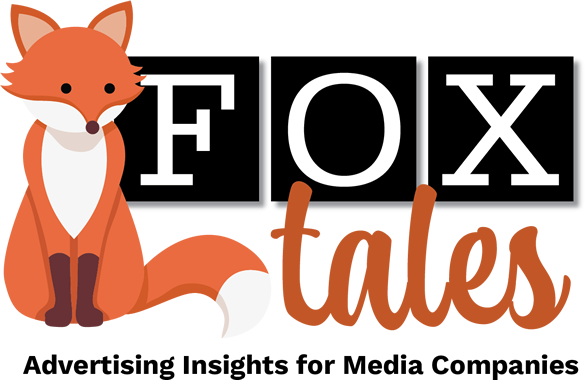A good advertising-sales business depends on a lot of things, but the foremost ingredient for successful selling is a high-quality product. In the case of media advertising, the audience is the product: that’s the basic transaction. A media company builds an audience through its content and sells access to it to advertisers.
If the media company builds a high-quality audience with the right characteristics for marketers, the transaction works. If it’s a poor audience—unqualified people or the wrong characteristics, even the best advertising salespeople will fail.

Sondra Hadden.
This is even more complicated now because selling occurs across so many channels and platforms simultaneously. A seller has to be able to describe the value of a print magazine, an event, an e-mail newsletter, a website, and more—plus the strength of combining some or all of them at the same time. With all this in mind, we wanted to check in with an expert about audience quality. We caught up with Industry Dive Senior Director, Audience Growth & Retention Marketing, Sondra Hadden. The company is among the country’s most respected B2B media companies, so it makes sense to interview one of its stars. What follows is an edited transcript of our conversation.
Fox Tales: What’s working best circa mid-2023 in audience engagement—both in content and in marketing?
Sondra Hadden: What works best is when content and marketing strategies are built to work together. Our newsroom has a pulse on the type of coverage that will resonate with our readers, but both of our teams spend a lot of time making sure our efforts are measurable and actionable. The audience team promotes special projects, but we also help set foundations—like best practices in SEO—that will attract the users we want to be engaged in the first place. At the end of the day, hyper-focused attention on your target readers will always steer you in the right direction, and tell you what to do more of—or less of.
Fox Tales: What’s your strategy for getting signups and growing your newsletter lists?
Hadden: We have both organic and paid strategies, and think of it like a typical funnel-marketing approach. On the organic side, that involves tactics like SEO best practices, onsite conversion strategies (from CTA A/B testing to house ads in sister publications), social media (primarily LinkedIn) and our referral program, which rewards users for getting their networks to sign up. Our newsroom also pays attention to which stories are converting. On the paid side, we primarily use LinkedIn and Facebook to drive sign ups, and my team pays incredibly close attention to this, especially for newer publications. Volume of sign ups is great, but we want to make sure that we’re also getting quality leads that match our target audience. So while we monitor all our KPIs—CPLs, CTR, etc., on a daily basis. We’ll pause spend if we’re not finding the right people. We do experiment with new channels where we can, so if and when we need to pivot from some of the tried-and-true platforms, it won’t be a huge learning curve to adjust. Smart experimentation is key to growth.
Fox Tales: How do you identify the right audiences for your content across your broad brand portfolio?
Hadden: We don’t go into a market if we don’t have the business case and the audience figured out, so there’s a lot of research right out the gate. Our journalists are of course at the heart of this, too, and we spend a lot of time at the launch of a publication to make sure everyone at the company, from sales to the marketing team, has an understanding of who we’re writing for and who our clients want to reach. For us, it’s as simple as having a core definition that guides everything—from the targeting we use in our ad campaigns, to how the user goes through the sign-up process, and what data we’ll collect from them. Later on, we’ll want to revisit the target reader definition and discuss whether or not it should change, especially for our long-standing publications. How has the industry shifted? Has our coverage changed? Are there job functions that exist today that didn’t when we first began? These questions make for really great conversations among our teams.
Fox Tales: Talk about the relationship between Industry Dive content and advertising performance.
Hadden: Like other publications, our advertisers can buy ads in our email newsletters. If we want performance for our advertisers, then our newsletters have to perform too. So it’s all related. The audience team ensures that we’re following deliverability best practices so our emails get into inboxes in the first place. That’s where it all begins. No one reads or clicks if they don’t see your email. And our editorial team spends a lot of time thinking about our subject lines, how our coverage provides a unique industry perspective missing from national headlines, and other ways we can stand out in a cluttered inbox. Drilling down further, we have content guidelines for our advertisers, too, and our ad-operations team guides our clients to suggest what will be most impactful. This is all driven by what we see performing on a daily basis. And then, finally, we have our custom content arm, studioID, which is really the intersection of this question. We have dedicated content strategists who build content and full marketing programs for our advertisers, taking lessons from what our newsroom produces, matched with the distribution and targeting to make sure our clients’ programs are seen by the right people. And while our editorial team is not involved in our clients’ content, everything the newsroom does benefits them. The knowledge of what’s working and resonating with our target readers is shared widely at our company.
Fox Tales: A strong reader relationship is an essential advertiser benefit. How do you do that? And what metrics are used to pitch advertisers?
Hadden: Whether you’re a newsroom like us or a company trying to educate an audience about your product, make sure you speak to your reader and address their challenges and pain points. For us that means contextualizing breaking news, or formatting our articles into Dive Briefs, which essentially provides the highlights front and center before we dive deeper. Because our target audiences are high-level executives, it’s very much about the way we deliver the news to them, too. They’re busy! If you can be focused and deliver value for them, that’s what will keep them coming back.
Outside of typical metrics, I’d say the biggest nuance in the metrics we use to pitch advertisers is more about why our audience reads us. We use testimonials and talk about our place in the industry. That can honestly come from Slack—we have a Newsroom-Wins channel, and it’s always fun to see folks highlight when our coverage is shared on the Hill, or by industry influencers, or our journalists are recognized with awards. We have a lot of passionate people here, and that’s a metric we absolutely want to convey to our advertisers, too.
